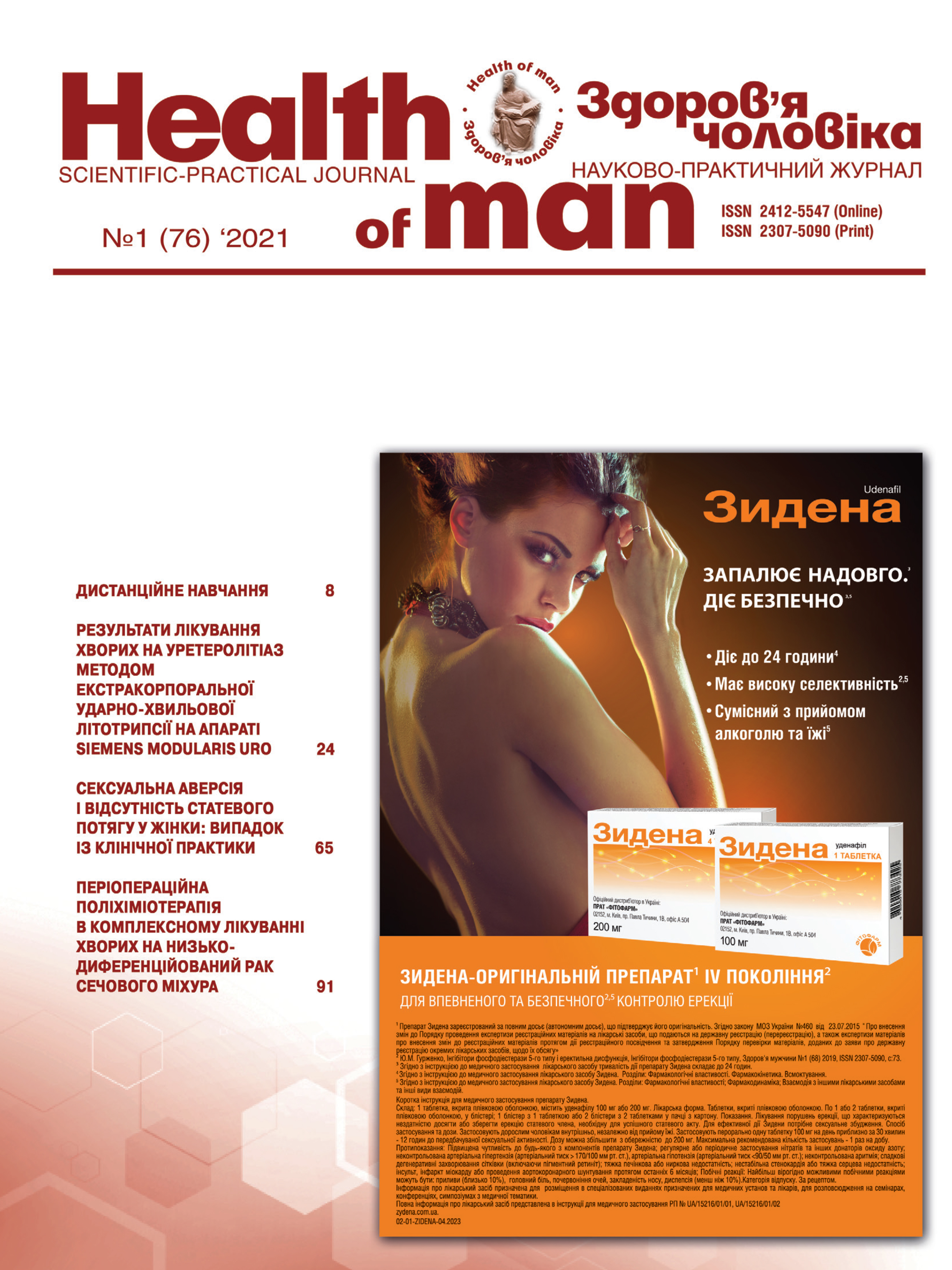Assessment of the Algorithms for Diagnostics and the Possibilities of Treating Patients with a Penile Dysmorphie Disorder
##plugins.themes.bootstrap3.article.main##
Abstract
The article discusses issues related to the choice of diagnostic algorithms and planning tactics for treating patients with penile dysmorphophobia. The psychological characteristics of this group of patients, methods of diagnosis, psychotherapy correction and the choice of surgical tactics are sounded.
The manifestations of penile dysmorphophobia and dysmorphomania, as disorders of a deeper level, are considered as an integrative problem solved from the standpoint of urology, psychotherapy, and aesthetic surgery. In conjunction with an andrologist, the involvement of a psychotherapist and, if necessary, a psychiatrist is required. At the initial stages of working with a patient, narrowly focused psychotherapy is used. The next level of correction is cognitive behavioral psychotherapy (CBT) with the technique of “exposure and prevention of reactions” or “cognitive restructuring”. The “mindfulness CBT” technique is considered important for teaching the patient the ability to stop subjective perception of personal experiences.
To consolidate the result, individual hypnosuggestational therapy and group (family) psychotherapy are used. The indications for surgical enlargement of the penis are divided into medical, functional and aesthetic. Penile dysmorphophobia is an aesthetic indication for surgery. Contradictions in carrying out such interventions include the lack of standardized methods with a high positive prognosis, overestimated patient expectations, and the lack of a result to improve a man’s self-esteem even with a positive result of the operation.
The clinic of the Department of Sexopathology and Andrology of the State Institution «Institute of Urology of the National Academy of Medical Sciences of Ukraine» uses a ligamentotomy technique to lengthen the penis and implant a polypropylene mesh under the superficial fascia of the penis to thicken it. For patients with manifestations of penile dysmorphophobia simultaneously with severe forms of erectile dysfunction, a number of operations have been proposed for the simultaneous installation of penile implants and augmentation of the tunica albuginea using a graft: corporoplasty with a circular graft, Sliding Technique, modification of the sliding technique (MoST), Multiple-slid-Technique (MuST) augmentation technique.
These techniques are not included in the list of recommendations offered by the urological community; they have high predictable risks of complications requiring urgent explantation of the prosthesis and irreversible loss of penile length.
##plugins.themes.bootstrap3.article.details##

This work is licensed under a Creative Commons Attribution 4.0 International License.
Authors retain the copyright and grant the journal the first publication of original scientific articles under the Creative Commons Attribution 4.0 International License, which allows others to distribute work with acknowledgment of authorship and first publication in this journal.
References
Жариков Н.М., Тульпин Ю.Г. Психиатрия. – М.: Медицина, 2002. – С. 288.
Щеплев П.А., Курбатов Д.Г. Малый половой член. Методы коррекции – М.: Медицина, 2003. – С. 117.
Корниенко А.М., Горпинченко И.И., Гурженко Ю.Н., Романюк М.Г., Лысенко Н.Н. Хирургическое ведение пациентов с пенильной дисморфофобией на фоне тяжелых поражений кавернозной гемодинамики // Здоровье мужчины. – 2014. – № 2. – С. 26–28.
Psychological Medicine, 2005, vol. 36, p. 877.
Katharine A Philips. BDD. Results of the European medical study // Oxford University Press, 2005 ed. – p. 56.
Su–Yeon, L. Woong-Hee, M. Fang-Hwan, and B. Sang-Kwon. Preoperative explanation of postoperative courses in penile augmentation and elongation // The Jornal of Sexual Medicine 1–149. Abstracts of the joint meeting of the European (ESSM) and International (ISSM) Societies for Sexual Medicine. Brussels, Belgium, 7–11 December 2008. – UP-226 – p. 143.





